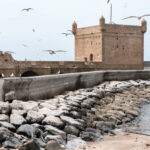The painted monasteries of Bucovina, located in the northern region of Romania, are a treasure trove of history and art. These monasteries, with their vibrant frescoes and intricate carvings, are a testament to the rich spiritual and cultural heritage of the Bucovinian people.
Built in the 15th and 16th centuries, these monasteries were at the forefront of the artistic and cultural developments of their time. They were painted by master artists, who used vibrant colors and intricate details to depict biblical scenes and saints, creating a visual representation of the teachings of the Orthodox Church.
The frescoes, with their rich symbolism and intricate details, offer a glimpse into the daily life, beliefs and customs of the Bucovinian people during the medieval period. They are a testament to the rich artistic and cultural heritage of Bucovina, and to the strong connection between spirituality and art.
Despite the passage of time and the wear and tear of the elements, the monasteries of Bucovina continue to inspire awe and admiration. They are a popular tourist destination, attracting visitors from all over the world who come to admire their beauty and marvel at their history and significance.
In summary, the painted monasteries of Bucovina are a true masterpiece of art and history, a testament to the rich spiritual and cultural heritage of the Bucovinian people. These monasteries, with their vibrant frescoes and intricate carvings, are a symbol of the connection between spirituality, art and culture, and offer a glimpse into the rich history and traditions of Bucovina.



Leave a reply